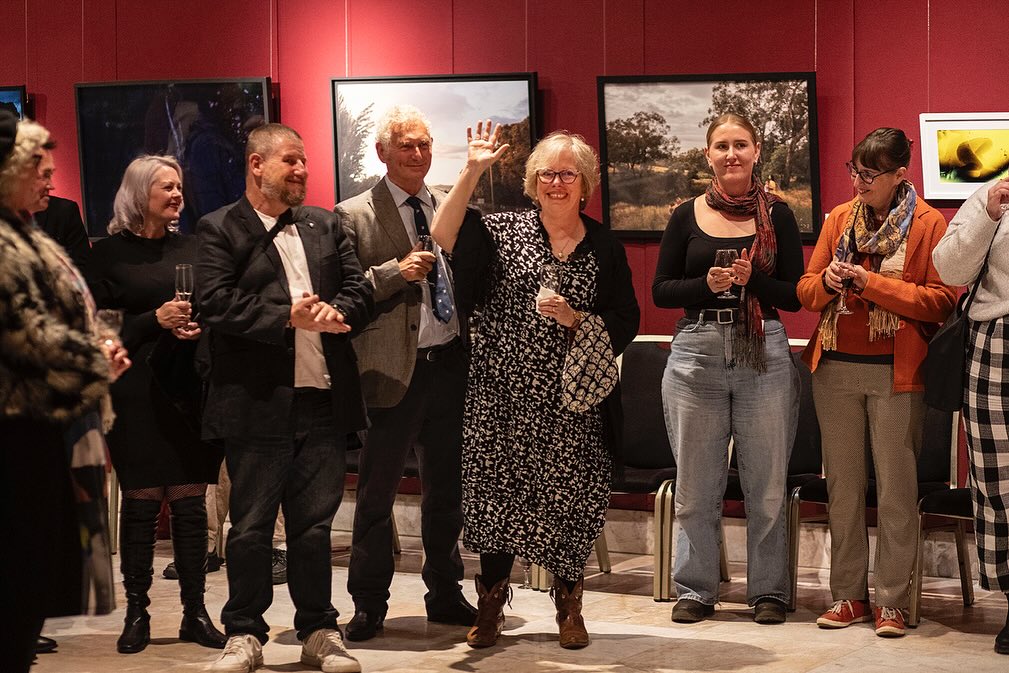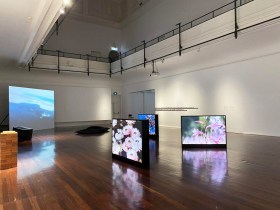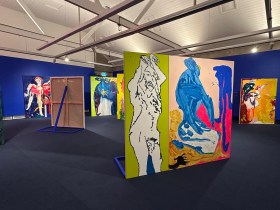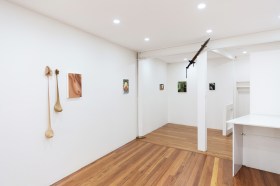Regional touring exhibitions are about access. They provide opportunities for local visitors and artists to see what would otherwise be only available in metropolitan cities, and also help build capacity for regional arts venues that are hosting the show.
But regional exhibitions and galleries have not always received the support and attention they deserve. Many are seeing the latest financial pressures adding to the pinch in both producing and hosting touring shows, despite a proven track record of quality and engagement.
Others say it’s time to rethink how regional touring exhibitions can occur without relying on the major players, as well as how funding for tours is structured.
ArtsHub takes a look at the regional touring landscape today in an increasingly competitive environment, with insights from galleries, regional organisations and touring bodies.
In this article:
Touring needs cross-fertilisation
Recently, Central West NSW’s regional arts development organisation, Arts OutWest opened two empowering exhibition at NSW Parliament House. While the World Waits and Beyond: Aboriginal Arts and Culture in Regional NSW have both been developed and curated by Arts OutWest.
While the World Waits curator Steven Cavanagh tells ArtsHub that the aim of touring exhibitions from the regions to metropolitan areas is to ‘bring that flow of visual arts the other way’.
Arts OutWest Executive Director, Kylie Shead adds, ‘We are creating work of such high calibre with amazing artists and we need to be showing those in Sydney. We constantly have to advocate for ourselves and for regional artists, and putting it in front of ministers is a really important way to say, “Hey, don’t forget us!”.’
She continues that while some regions are popular tourist destinations, it remains a challenge to get people through the doors and into an exhibition. Touring out of the regions is not about getting some stamp of approval, but to champion regional talent that is homegrown and relevant to those in metropolitan areas.
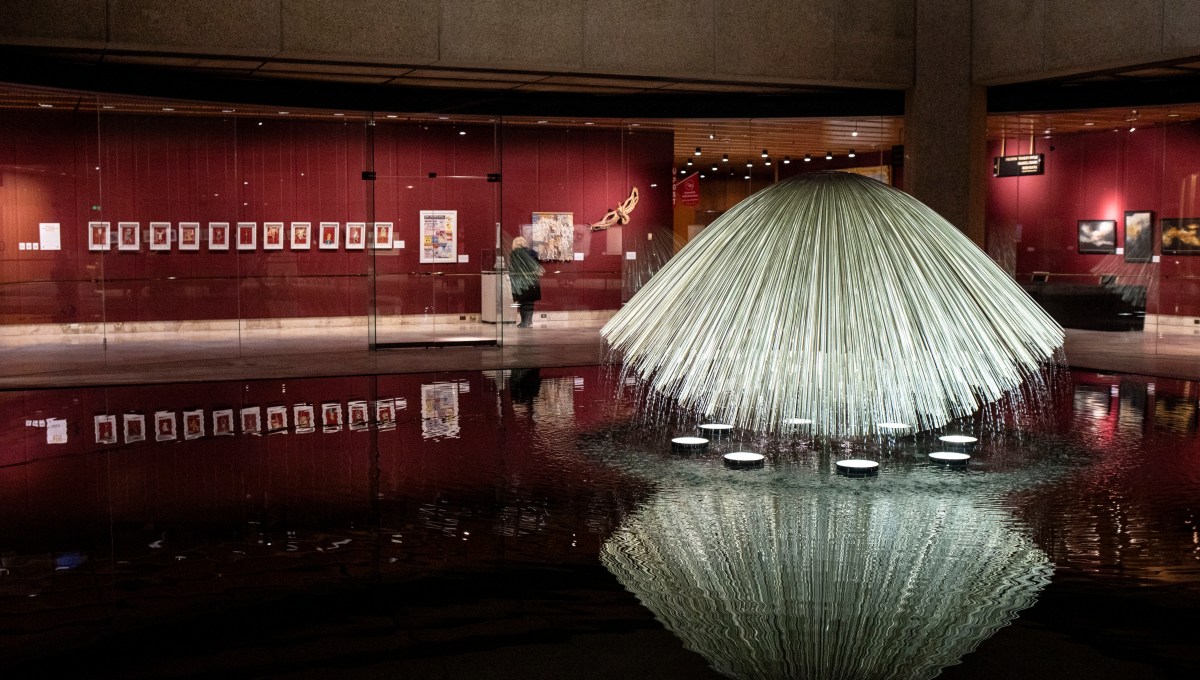
Before While the World Waits opened at NSW Parliament House, it had travelled to a dozen regional galleries, community venues and purpose-built spaces across every Local Government Area (LGA) looked after by Arts OutWest. Cavanagh points out that the exhibition had an ‘in-built audience’ because it features locals, and this network will become a prototype for future shows too.
Shead continues, ‘I would like to think that there will be more priority for inter-regional touring, so that those artists and audiences are seeing the value of the conversations people within their region are having, as opposed to always looking for leadership or input from metropolitan [areas] because that’s been the pattern [before].’
The regional perspective: a buffer and opportunity to diversify
Out of an annul exhibition program of around 20 shows, Wagga Wagga Art Gallery hosts three to four touring exhibitions. Director Dr Lee-Anne Hall tells ArtsHub that touring shows introduce local audiences to new artists, but are also an effective use of resources. ‘We choose what will complement our broader program and use them more in a supplementary way. We are looking for diversity and inclusion, building audiences, but also building capacity for regional artists.’
Hall continues that while the benefits for the public are enormous, it also gives the gallery, and a very small team, ‘a little pause point’. ‘We’re still installing, marketing, developing public programs for touring shows, but it just means that we get a mental break when we know a tour is coming in.
‘It’s a bit of a buffer, but if they start jacking up the price of tours then we have to go, “Can we afford this?”‘
Claire Watson, who has been the Director of National Exhibitions Touring Support (NETS) Victoria for the past five years, says, ‘Many gallery staff are still recovering from the exhaustion of shifting their programs over many lockdowns and touring exhibitions can provide a valuable respite for staff while meeting the demands of a diverse program.
‘There has always been an interest in “cased” shows that are high quality and easy to install, and these are on the rise; however, NETS Victoria has always provided more ambitious projects, committed to supporting living artists and cutting-edge work, that is often more time and resource consuming to develop.’ In addition to providing the exhibitions, NETS Victoria also offers on-ground support with a staff member and subsidised public programming.
Susan Wacher is Exhibitions, Funding and Programs Manager, Museums & Galleries of NSW (MGNSW). One thing she has observed post-pandemic is the increasing demand for public programs to come as a package with the touring exhibition These range from workshops or activities to ‘in-built funds to send artists and curators to the venues,’ Wacher says. ‘I think that may have come about because, during the pandemic, the first thing to go was those engagement and public programs, and education staff at galleries. That hasn’t come back as strongly as it should.’
In terms of what exhibitions can make an impact through touring, Watson says as a curator who’s worked across regional and metropolitan galleries, she looks for shows ‘that were unlike anything I could curate, so that it enriched the offering to the local community’.
She adds that addressing gaps in programming in regional institutions, such as First Nations representation, is critical, and organisations such as NETS Victoria are responsible for helping to open up those conversations whenever their shows travel.
Backing funding decisions for regional tours
Wacher says another major post-pandemic challenge of regional touring is that ‘the cost of freight has gone up astronomically’. Costs now could be nearly double what they were in 2018 and 2019.
Some funding bodies have tried to respond to this by giving more to cover freight, but funding structures are also changing.
For example, the final iteration of Creative Australia’s Contemporary Touring Initiative, which provides up to $200,000 for the national touring of contemporary visual arts and craft exhibitions, was delivered earlier this year. It outlined that successful applicants are required to have 40% of touring venues in regional areas.
Currently there is no other Creative Australia fund specifically directed at touring regional visual arts exhibitions.
Watson is equally concerned by the decline in funding. ‘With cost of living increases, government support is not keeping up, making the work of agencies like NETS Victoria more difficult,’ she says. Funding reductions can be felt across small to medium organisations at both the federal and state level. Watson continues, ‘Within a more constrained economic environment, low-cost touring exhibitions that don’t involve paying living artists are being supported more and more, which is disheartening to me as I am passionate about supporting sustainable careers for living artists.’
Another touring fund, Visions of Australia also requires the inclusion of regional and/or remote venues, and at least three venues outside the applicant’s home state or territory. That’s not something smaller organisations or individual artists can take on, and previous funding recipients commonly include major state and regional galleries, as well as touring organisations such as MGNSW and NETS Victoria.
Last year, around $260,000 was granted for MGNSW to tour the Museum of Contemporary Art Australia’s annual Primavera 2023: Young Australian Artists exhibition. Wacher says there was a demand from ‘regional galleries and communities that they wanted access to early-career artists and curators’. Four artists and curator, Talia Smith, travelled along with the exhibition to a regional opening to build those connections.
Other touring funding initiatives are usually spread across multiple art forms, and inherently pose different expectations.
Wacher continues, ‘It’s often difficult to explain to funding bodies that [visual arts touring] is not the same structure as a performing arts tour; there’s no company or people employed going along with the tour, there’s no ticketing and no income, either.
‘[But] having those exhibitions tour means skills can be sourced locally and it creates local economic benefit,’ she stresses.
Read: Ballet on the road: what goes into a regional ballet tour
Both Wacher and Watson note that while quantitative data such as visitor numbers can be an important indicator of success and support funding applications, qualitative data can be equally powerful and regional organisations should keep in mind to capture this.
Wacher expands, ‘The proppaNOW exhibition [OCCURRENT AFFAIR], which toured last year during the Voice to Parliament [campaign] and is still on tour, was a lightning rod for lots of regional venues. There were comments from people like, “Went in a no, came out a yes“… We’ve always found that those kinds of data are more useful in terms of arguing to funding agencies that this needs to happen than the bum-on-seats kind of model.’
Watson echoes, ‘I think it’s important to note that funding models and acquittals are not necessarily able to capture the transformative power of art. There is usually an emphasis on quantitative data and, while there is of course merit to collecting attendance figures in terms of supporting local economies and audience development, visitor comments sometimes give NETS Victoria the most valuable and reaffirming feedback for our touring exhibitions.’
Outside of NSW and Victoria, WA is in its first year of the five-year Regional Exhibition Touring Strategy and Artback NT is currently touring two exhibitions with two more in development.
Each state and territory has its own strengths and setbacks, so while NSW and Victoria may have better existing infrastructure, smaller organisations can capitalise on their flexibility and innovation to establish alternative models, such as a Regional Arts Triennial.
Is the answer to freight digital?
Many of the interviewees mention the touring of digital components, such as video, to be more affordable and accessible than physical, large-scale artworks.
‘Video shows often don’t require fundraising and also have a lighter carbon footprint,’ says Wacher. For example, Montages: The Full Cut, 1999-2015, featuring eight films by Tracey Moffatt and Gary Hillberg, was able to travel to 21 venues, from tiny art centres to a gallery inside a library.
New initiatives support this approach, including the Art Gallery of South Australia’s AGSA Screen: Wavelength, which is dedicated to touring moving image works to the regions, and was announced in April this year.
But there is also the concern of technical difficulties and capacity at each regional venue to manage both the software and hardware maintenance of more demanding works.
Jess Johnson and Simon Ward: Terminus is another example. The virtual reality installation has been widely popular and is a National Gallery Touring Exhibition, sponsored by Visions of Australia and the National Collecting Institutions Touring and Outreach program.
The show has been touring since 2019, but to have tech on the road for several years, running around the clock, can pose some issues. Increased visitor numbers as a result of these one-off phenomena are often not a long-term solution for regional galleries.
The National Gallery of Australia and Patternmakers are currently in the process of collecting data and feedback to formulate a report on the impact of NGA’s touring exhibitions. ArtsHub will continue to follow the development of this report.

